You might think the only way you’d ever end up in Uzbekistan is one of those throw-a-dart-at-a-map maneuvers. Think again. Long dormant in the travelsphere, Uzbekistan is slated to become a magma-hot Central Asian destination over the next few years. It’s easy to see why: Islamic architecture dressed in blue-green tiles rises up over the sandy historic centers of millennia-old cities, once the crown jewels of the Silk Road. Get a head start on discovering the mosques, minarets, and mausoleums that Uzbekistan has in store with these seven unmissable sights.
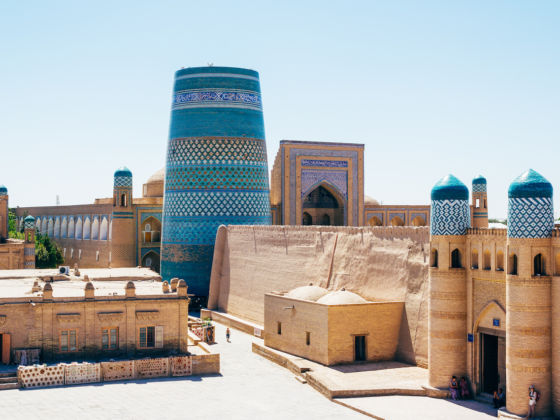
7 Sights That Make Uzbekistan a Must-See Central Asian Destination
1. Samarkand
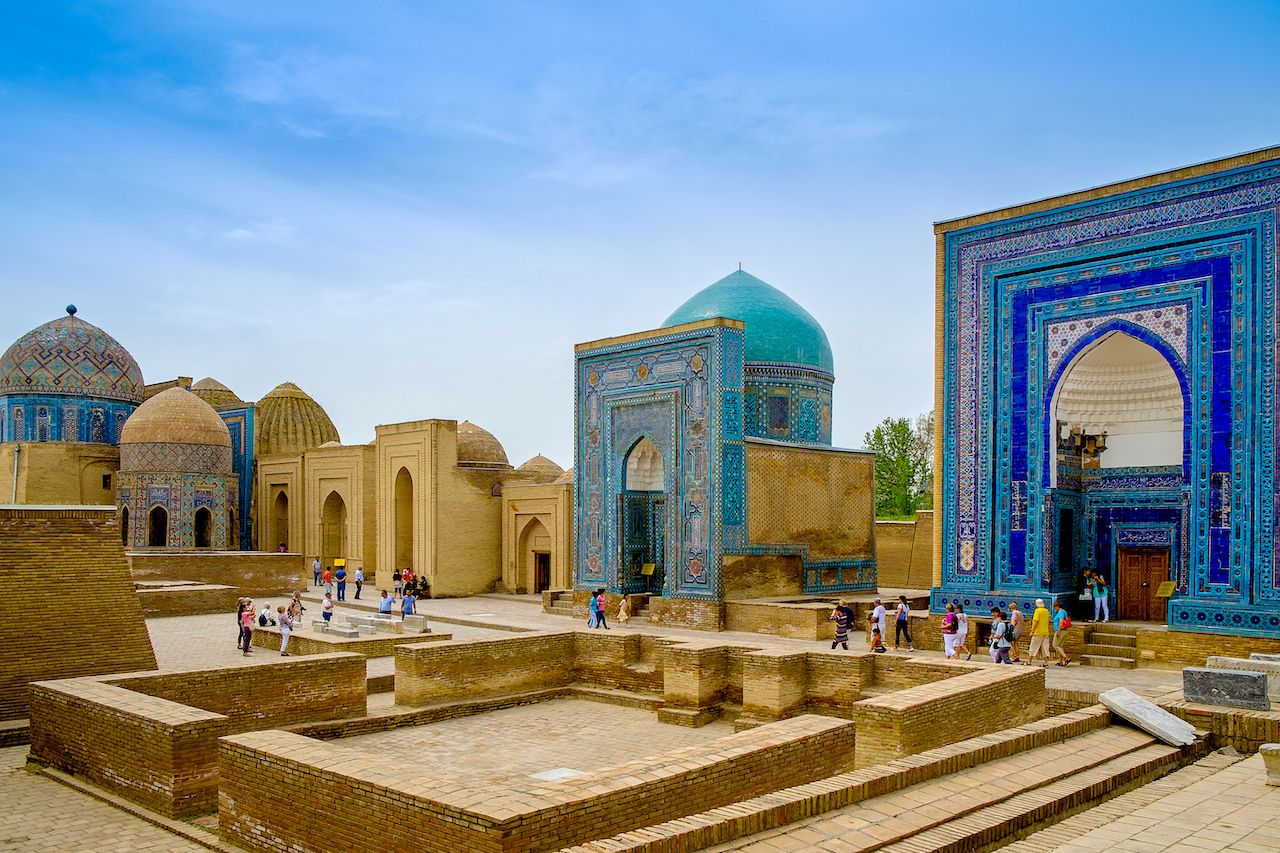
Photo: Evgeniy Agarkov/Shutterstock
Continuously inhabited for over two and a half millennia, Samarkand is so full of antiquities that its whole historic center is one great big sight. The ancient city helps bridge China and the Mediterranean, making it a magnet for traders during the days of the Silk Road. Daily life in ancient Samarkand revolved around Registan, a square that now bustles with tourists rather than trade activity. Mosaicked madrasas, or Islamic religious schools, dating back to the 15th and 17th centuries bound the plaza on three sides, helping the old city score UNESCO recognition in 2001.
Heading northeast from Registan, you’ll come across the heavily ornamented tombs of the Shah-i-Zinda necropolis and the Bibi-Khanym Mosque with its geometric, blue-and-white-tiled facade. Traveling in the opposite direction will lead you to the fluted, turquoise dome of the Gur-e-Amir Mausoleum, the resting place of Amir Timur, the first and feared ruler of the Timurid dynasty. Samarkand can be toured comfortably in two days or quickly in one. For the best weather and least chance of crowds, visit between late September and early October.
2. Bukhara
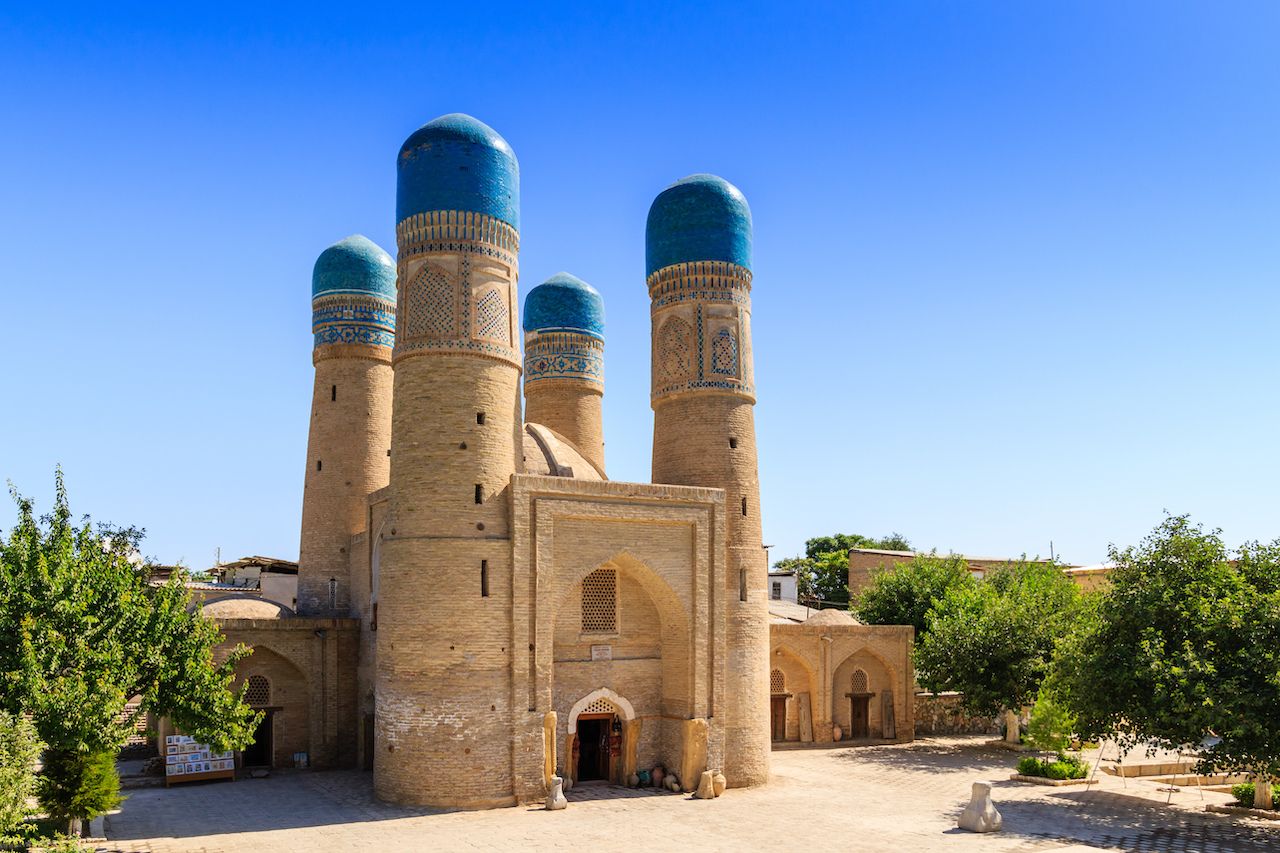
Photo: Evgeniy Agarkov/Shutterstock
Like Samarkand and Khiva, Bukhara was a trading hub in the Silk Road era. Its historic center houses more than 100 ancient Islamic monuments, earning it a UNESCO designation in 1993. Start your self-guided tour at the Ark of Bukhara, a fifth-century fortress that once cordoned off royal residences and now houses various museums. Then visit the Samanid Mausoleum, which was completed during the 10th century and is thought to be the oldest surviving example of Islamic architecture in Central Asia.
Replenish with a samsa, an Uzbek samosa, from a street cart before stopping for tea at Lyabi-Hauz where you can admire religious structures flanking one of the last public ponds, or hauz, in Uzbekistan. End the day with a trip to the Poi-Kalyan religious complex to study the blue-tiled facade or visit the Chor Minor Mosque and its turquoise-capped towers.
3. Itchan Kala
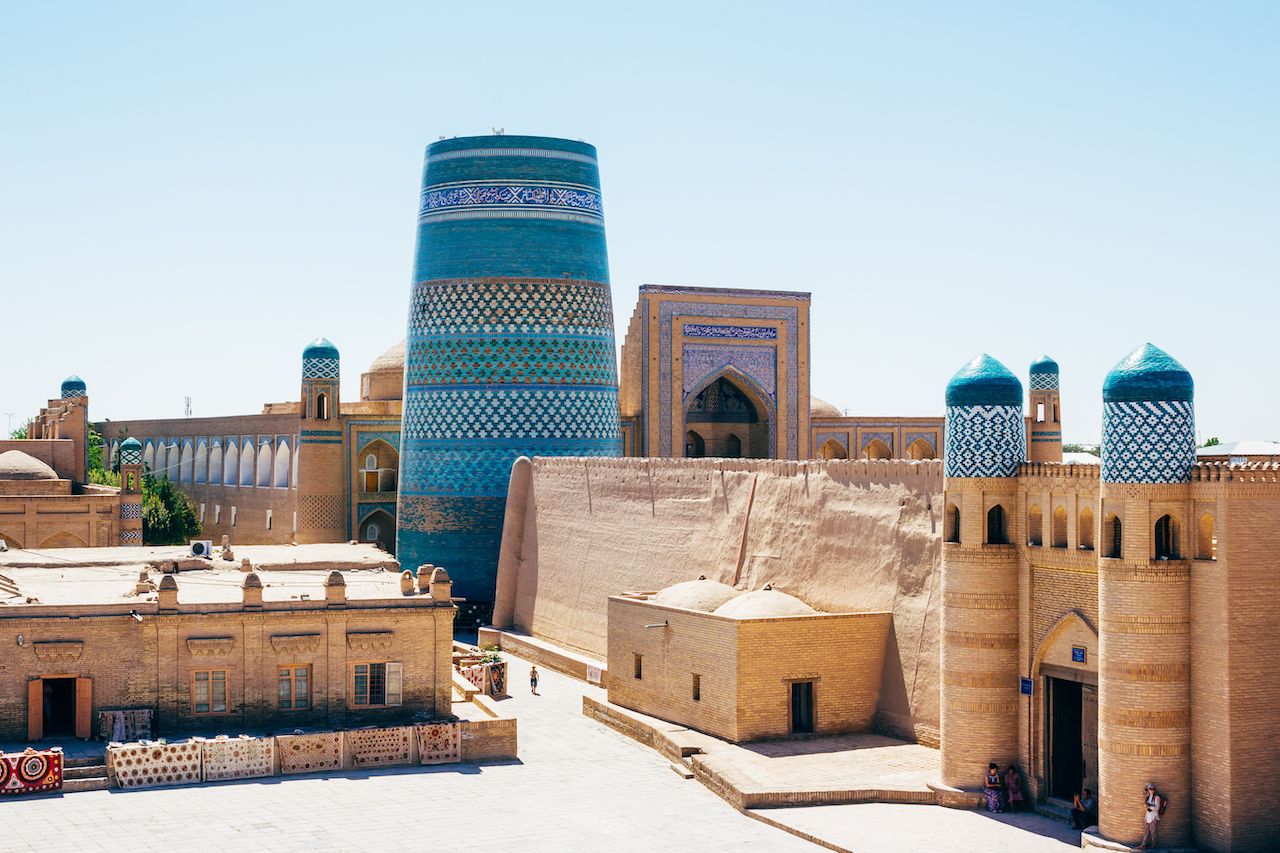
Photo: Iryna Hromotska/Shutterstock
Itchan Kala is the fortified inner city of Khiva, the last stop on the Silk Road in Uzbekistan for caravans traveling west from China. Around 50 monuments, including the must-see Djuma Mosque, and 250 former homes occupy the walled city. The earliest structures date back to the 10th century while the majority were constructed in the 18th and 19th centuries. Everything in Itchan Kala is impressive, even the gates and walls themselves, which tower more than 30 feet in the air and feature crenelated designs. Still, the sight is most astounding as a composite, representing one of the oldest unbroken walled cities in Central Asia.
4. Fergana Valley
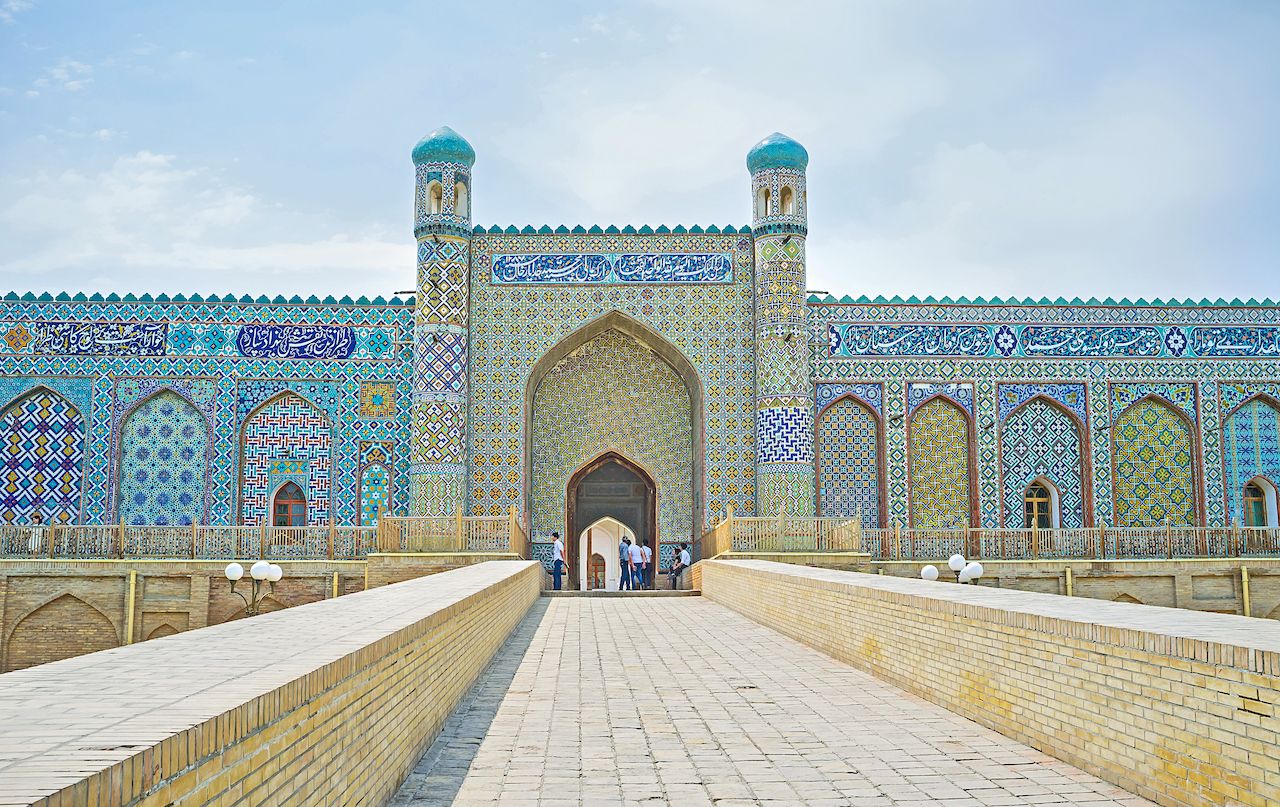
Photo: eFesenko/Shutterstock
Silk Road traders traversed the Fergana Valley to get between western China and Samarkand. Cradled by the Tian Shan and Gissar-Alai mountain ranges, the valley has a long and often turbulent history given its position between multiple Central Asian borders and widespread ethnic diversity. The landscape is beautiful, moving between grassy hills and mountain passes, but the man-made additions to the valley make the larger cities well worth visiting.
One example is the Khudayar Khan Palace in Kokand, a massive palace erected on citadel ruins and decorated inside and out with tiles stained every shade of blue and green. Kokand also makes a great base for those looking to spend a few days exploring the Fergana Valley with several accommodation options available.
5. Amir Timur Museum
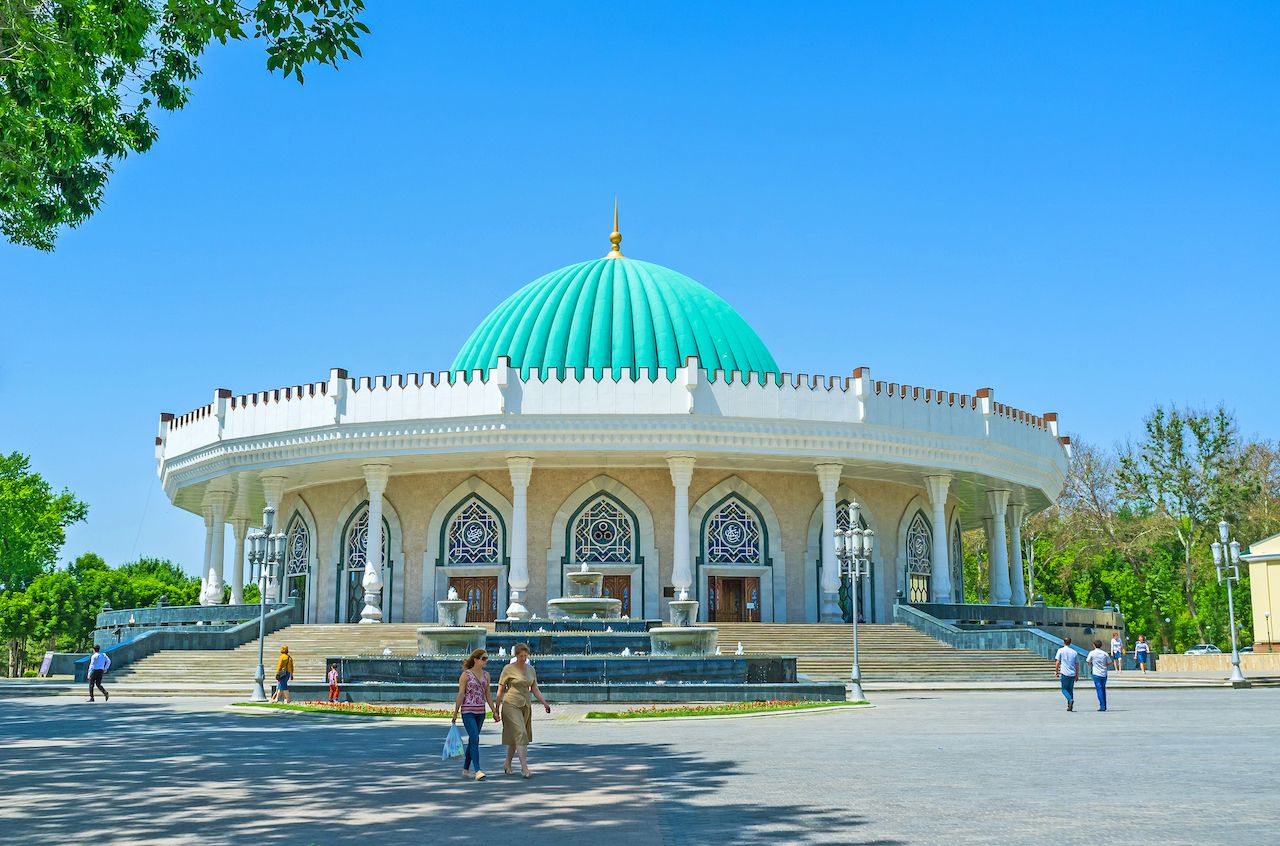
Photo: eFesenko/Shutterstock
Turco-Mongol warlord Amir Timur ruled over Central Asia during the 14th century, ushering in the Timurid dynasty with a barbarous, militaristic zeal. Best known for his conquering ways, Timur also had a soft spot for art and architecture and is largely responsible for the historic monuments visitors descend on Uzbekistan to see today. This museum in Tashkent displays portraits, murals, military relics, astronomical instruments, and more from the Timurid Empire. The interior is richly decorated, and the museum itself is hard to miss. Just look out for the bright blue cupola near Amir Timur Square.
6. Ak-Saray Palace

Photo: eFesenko/Shutterstock
Like most ancient rulers with an unquenchable thirst for power, Amir Timur had equally grandiose visions for his palatial estates. Perhaps his most ambitious undertaking was the Ak-Saray Palace, or White Palace, built in his birthplace of Shakhrisabz. Construction on the palace started in 1380, though little of the resplendent estate remains. Visitors can admire the grand, crumbling entryway, which still towers more than 100 feet over the city, proudly displaying what’s left of its mosaics and painted pottery. Don’t be surprised if you see tufts of white tulle in the background of your photos; the UNESCO-protected palace is a popular spot for locals to pose for wedding photos.
7. Chorsu Bazaar

Photo: NICOLA MESSANA PHOTOS/Shutterstock
Tashkent is going through a bit of an identity crisis with its odd mix of Soviet-era apartment buildings and newly erected high rises. Where the city really shines is its Old Town, a pocket of the Uzbek capital committed to preserving the ancient Central Asian aesthetic and a more traditional way of life. One example is the Chorsu Bazaar. The green-domed marketplace sells everything from spices and dried fruit to ceramics and jewelry while also serving as social hub in Old Town. It’s the perfect place to do your souvenir shopping, try some traditional Uzbek flatbread, or settle in for some people-watching at a chaikhana, or tea house.